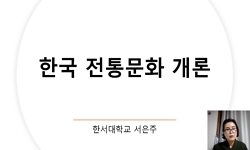까뽀에이라는 브라질에서 탄생한 독창적인 무술이자 예술 형식으로, 춤, 음악, 노래 등을 결합한 복합적인 특징을 지니고 있다. 아프리카 노예들의 저항과 생존 전략에서 비롯된 까뽀에이라...
http://chineseinput.net/에서 pinyin(병음)방식으로 중국어를 변환할 수 있습니다.
변환된 중국어를 복사하여 사용하시면 됩니다.
- 中文 을 입력하시려면 zhongwen을 입력하시고 space를누르시면됩니다.
- 北京 을 입력하시려면 beijing을 입력하시고 space를 누르시면 됩니다.
부가정보
국문 초록 (Abstract)
본 논문은 까뽀에이라가 브라질 사회에서 어떻게 변화, 확산되어 왔는가를 분석하는 데 목적을 둔다. 우선 18세기 말 리우데자네이루에서 “가장 심각한 범죄”로 간주되었던 까뽀에이라의 초기 역사와 탄압의 맥락을 살펴보며, 이를 통해 노예제와 식민지 사회 속에서 까뽀에이라가 지녔던 정치적, 사회적 의미를 조명한다. 또한 19세기 중반 이후 도시화와 근대화의 과정에서 까뽀에이라가 갱단 문화와 결합하는 양상, 브라질 공화국 수립 이후 탄압과 재조명을 통해 국가 스포츠로 자리 잡는 과정에 주목한다.
마지막으로는 바이아 지역 까뽀에이라가 여가와 놀이로서 점차 긍정적 이미지를 얻어간 과정, 빙바와 빠스치냐 같은 거장들의 활동 속에서 만들어진 까뽀에이라의 체계화를 분석한다. 아울러 센잘라와 아바다 같은 단체의 활동이 브라질의 세계화에 어떤 방식으로 기여했는지에 대해서도 함께 살펴본다.
까뽀에이라는 브라질에서 탄생한 독창적인 무술이자 예술 형식으로, 춤, 음악, 노래 등을 결합한 복합적인 특징을 지니고 있다. 아프리카 노예들의 저항과 생존 전략에서 비롯된 까뽀에이라는 단순한 격투 기술을 넘어, 억압받던 공동체의 해방구 역할을 수행하며 브라질 사회에서 중요한 문화적 위치를 차지해왔다.
본 논문은 까뽀에이라가 브라질 사회에서 어떻게 변화, 확산되어 왔는가를 분석하는 데 목적을 둔다. 우선 18세기 말 리우데자네이루에서 “가장 심각한 범죄”로 간주되었던 까뽀에이라의 초기 역사와 탄압의 맥락을 살펴보며, 이를 통해 노예제와 식민지 사회 속에서 까뽀에이라가 지녔던 정치적, 사회적 의미를 조명한다. 또한 19세기 중반 이후 도시화와 근대화의 과정에서 까뽀에이라가 갱단 문화와 결합하는 양상, 브라질 공화국 수립 이후 탄압과 재조명을 통해 국가 스포츠로 자리 잡는 과정에 주목한다.
마지막으로는 바이아 지역 까뽀에이라가 여가와 놀이로서 점차 긍정적 이미지를 얻어간 과정, 빙바와 빠스치냐 같은 거장들의 활동 속에서 만들어진 까뽀에이라의 체계화를 분석한다. 아울러 센잘라와 아바다 같은 단체의 활동이 브라질의 세계화에 어떤 방식으로 기여했는지에 대해서도 함께 살펴본다.
다국어 초록 (Multilingual Abstract)
This paper aims to analyze how Capoeira has transformed and spread within Brazilian society. It explores the early history and context of repression surrounding capoeira, particularly during the late 18th century in Rio de Janeiro, where it was considered "the most serious crime." Through this lens, the study highlights the political and social significance of Capoeira within the systems of slavery and colonial society. Additionally, the paper examines how Capoeira merged with gang culture amidst urbanization and modernization in the mid-19th century, as well as its repression and subsequent recognition as a national sport after the establishment of the Brazilian Republic.
The analysis further delves into the evolution of Capoeira in the Bahia region, where its recreational and performative aspects helped foster a positive image. The contributions of maestros like Mestre Bimba and Mestre Pastinha in systematizing Capoeira are also examined. Lastly, the paper discusses the roles of organizations such as Senzala and Abadá in shaping Capoeira’s globalization and influencing its presence on the international stage.
Capoeira is a unique martial art and art form that originated in Brazil, characterized by its combination of dance, music, and singing, embodying a multifaceted cultural expression. Rooted in the resistance and survival strategies of African slaves, C...
Capoeira is a unique martial art and art form that originated in Brazil, characterized by its combination of dance, music, and singing, embodying a multifaceted cultural expression. Rooted in the resistance and survival strategies of African slaves, Capoeira transcends mere fighting techniques to serve as a sanctuary for oppressed communities, playing a significant cultural role in Brazilian society.
This paper aims to analyze how Capoeira has transformed and spread within Brazilian society. It explores the early history and context of repression surrounding capoeira, particularly during the late 18th century in Rio de Janeiro, where it was considered "the most serious crime." Through this lens, the study highlights the political and social significance of Capoeira within the systems of slavery and colonial society. Additionally, the paper examines how Capoeira merged with gang culture amidst urbanization and modernization in the mid-19th century, as well as its repression and subsequent recognition as a national sport after the establishment of the Brazilian Republic.
The analysis further delves into the evolution of Capoeira in the Bahia region, where its recreational and performative aspects helped foster a positive image. The contributions of maestros like Mestre Bimba and Mestre Pastinha in systematizing Capoeira are also examined. Lastly, the paper discusses the roles of organizations such as Senzala and Abadá in shaping Capoeira’s globalization and influencing its presence on the international stage.
동일학술지(권/호) 다른 논문
-
정치와 사회로, 그리고 유럽중심주의를 넘어 -신정치경제와 자본주의 역사-
- 고려대학교 역사연구소
- 김승우
- 2025
- KCI등재
-
프랑스 아시아학회 소장 廣開土王碑 탁본의 유형과 제작 시기
- 고려대학교 역사연구소
- 박대재
- 2025
- KCI등재
-
- 고려대학교 역사연구소
- 정상호
- 2025
- KCI등재
-
임진왜란 직전 일본의 정세와도요토미 히데요시의 전쟁 구상-도요토미 히데요시 발급 문서를 중심으로-
- 고려대학교 역사연구소
- 김경태
- 2025
- KCI등재





 KCI
KCI KISS
KISS






